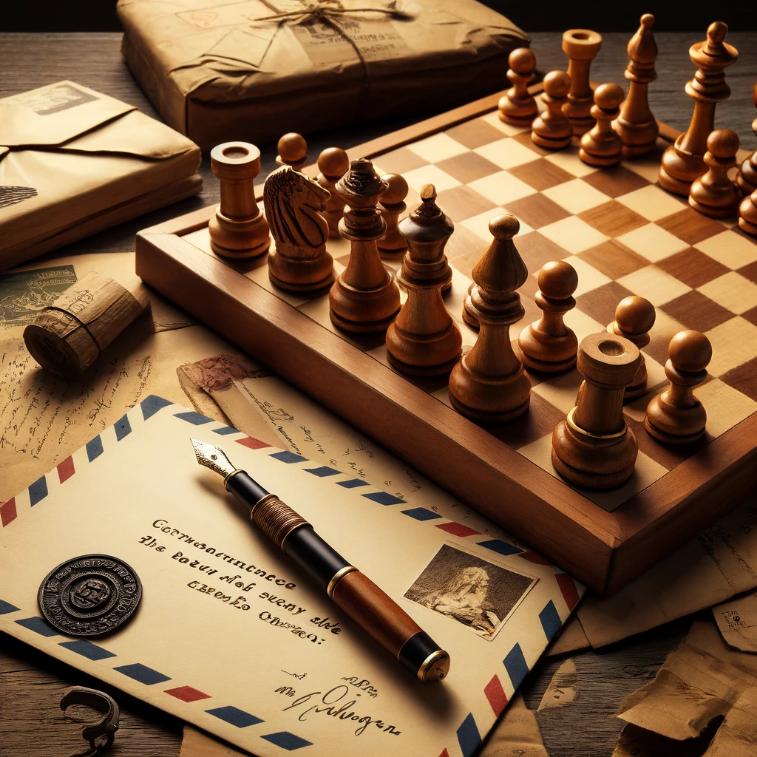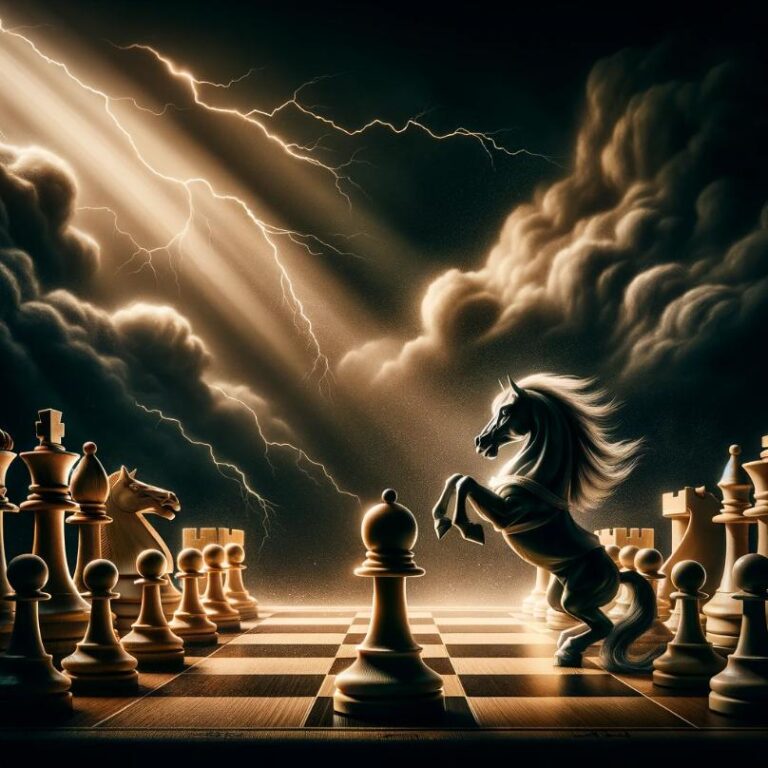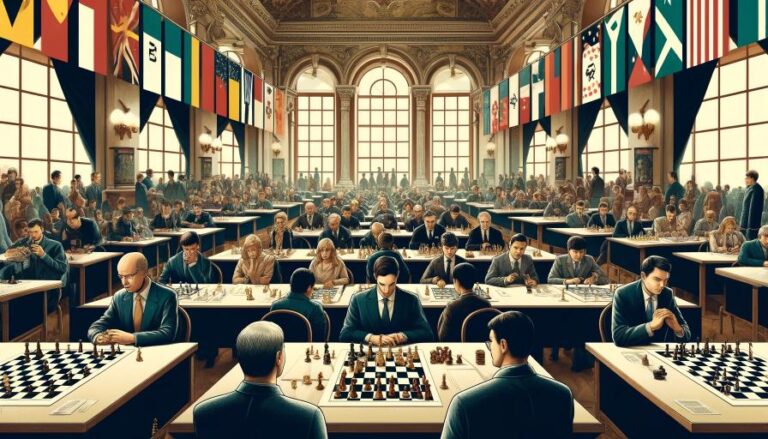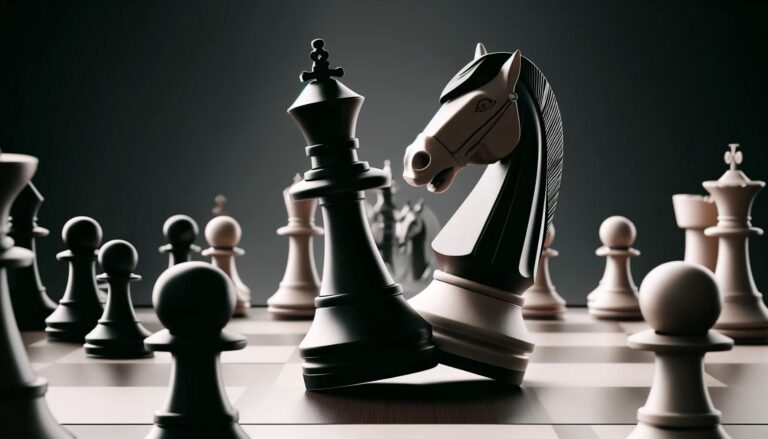The Basics of Chess Pieces
Chess is a strategic board game with a history that spans centuries. It is widely popular and is played by millions of people around the world. The game involves two players, each with a set of 16 chess pieces, who move their pieces on a square chessboard with the goal of capturing the opponent´s king. The beauty and complexity of this game lie in the unique movements and characteristics of each chess piece. In this section, we will take a closer look at the different chess pieces and their roles in the game.
The King
The king is the most important piece in the game of chess. It is also the weakest in terms of movement as it can only move one square at a time in any direction. The king´s goal is to avoid being captured by the opponent´s pieces. The game is won when the king is in a position where it cannot escape capture, also known as checkmate. The king is distinguishable by its crown-shaped top and is usually placed in the middle of the back row at the start of the game.
The Queen
The queen is the most powerful piece on the chessboard. It can move in any direction, either horizontally, vertically, or diagonally, for any number of squares. This characteristic makes the queen a formidable piece in the game as it can control large parts of the board. The queen is marked by a tall and pointed crown and is placed next to the king at the beginning of the game.
The Rook
The rook, also known as a castle, is another powerful piece in the game of chess. It can move horizontally or vertically for any number of squares and is unable to move diagonally. This movement pattern allows the rook to control long, straight lines on the board. This makes the rook a useful piece for controlling the edge of the board, where it can attack the opponent´s pieces from a safe distance. The rook is marked by a tall and round top and is placed in the corners of the board at the start of the game.
The Bishop
The bishop is a unique piece in the game of chess. It can only move diagonally for any number of squares, similar to the queen. Each player starts with two bishops, one positioned on the white squares and the other on the black squares. The bishop´s movement pattern allows it to control long diagonals, making it a valuable piece for attacking the opponent´s pieces. The bishop is marked by a tall and pointed top with a bishop´s miter, a small hat-like symbol, placed above it.
Special Chess Pieces
Outside of the six standard chess pieces mentioned above, there are two special pieces that have their own unique movements and purposes. These pieces are the knight and the pawn.
The Knight
The knight is the only chess piece that is allowed to “jump” over other pieces. It moves in an “L” shape, two squares horizontally and one square vertically, or two squares vertically and one square horizontally. This allows the knight to move on the chessboard in a way that no other piece can. The knight´s movement pattern is often tricky to predict and can lead to surprise attacks and clever maneuvers. It is marked by a small horse-shaped top and is placed next to the bishop at the beginning of the game.
The Pawn
The pawn is the smallest and most numerous piece on the chessboard. Each player starts with eight pawns, and their movements are limited to one square forward at a time. However, on its first move, a pawn can choose to move two squares forward instead of one. Pawns can also capture diagonally, but they cannot move backward. Pawns also have a unique way of capturing the opponent´s pieces, which is by moving one square diagonally. This piece is marked by a simple and small top and is placed in front of the other pieces, closest to the opponent´s side of the board, at the beginning of the game.
Using Chess Pieces to Your Advantage
Now that we have a basic understanding of each chess piece´s movement pattern, it is crucial to understand how to use them to your advantage. The key to winning a game of chess is to control the board and your opponent´s pieces, and each chess piece plays a role in achieving this goal.
Developing Your Pieces
One of the essential aspects of chess is developing your pieces, which means getting them off their starting squares and placing them in more favorable and influential positions. In the beginning, it is crucial to develop your bishops, knights, and rooks, as they have the ability to control the center of the board and attack the opponent´s pieces. Starting with the pawns and moving them forward can help create space for these pieces to move freely.
Protecting the King
As mentioned earlier, the king is the most crucial piece in the game of chess, and losing it results in a loss. Therefore, it is vital to protect your king at all times. One way to protect your king is by “castling,” a move in which the king moves two squares towards a rook and the rook jumps over the king, landing next to it. This move is a way to move the king to a safer position while also bringing the rook closer to the center of the board to join the attack.
Conclusion
Chess is a game that requires a deep understanding of each piece´s unique movements and the ability to use them to your advantage. By getting to know each game participant, players can create strategic moves, plan their attacks, and ultimately lead to victory. With centuries of history behind it, chess continues to intrigue and challenge players of all ages, and understanding the role of each chess piece is the first step to mastery in this timeless game.







